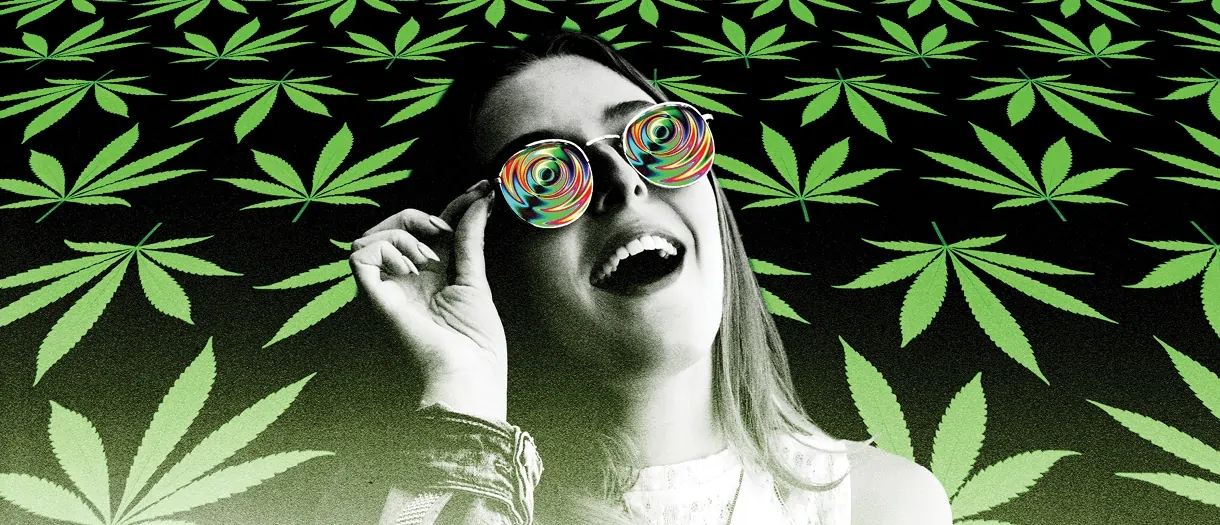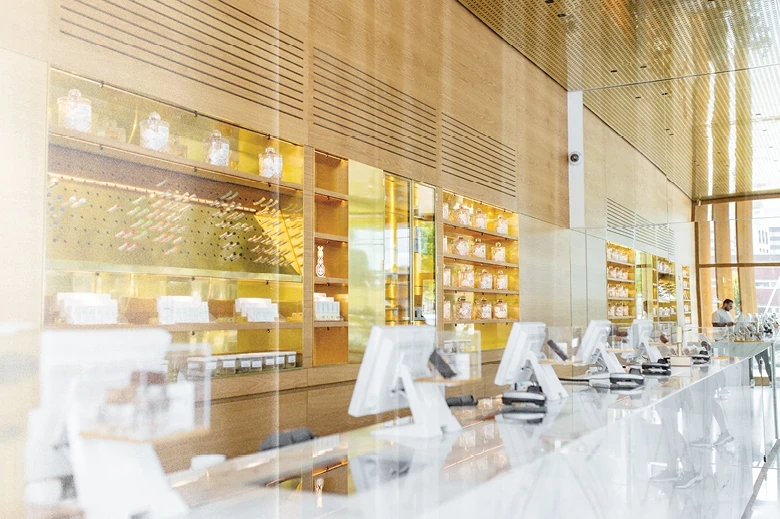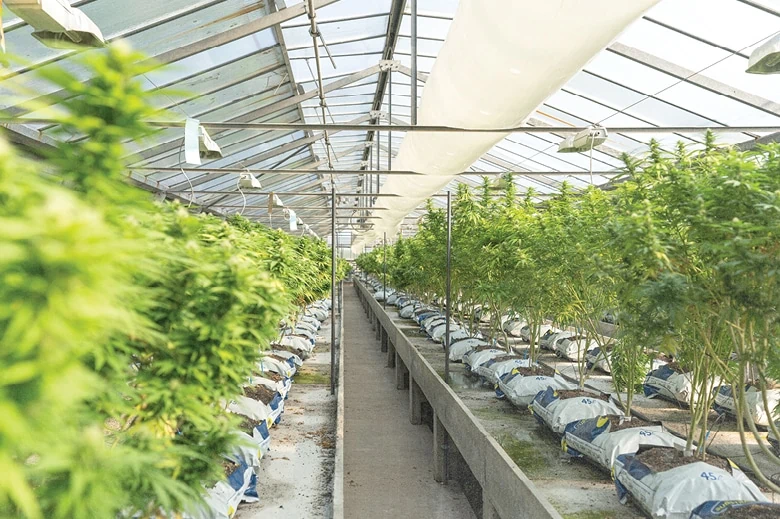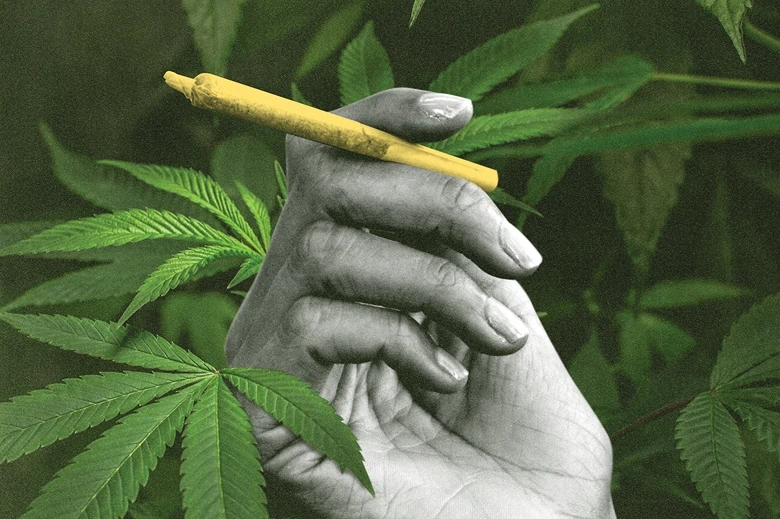What a (not-so) long, strange trip it’s been

Summary
Since legalization, the cannabis industry in Canada has gone through all kinds of ups and downs. For its first years as a market, cannabis was largely a
B2B enterprise: growers working with processors and distributing to individual retailers. But as the market started to cohere, branding has become one of the primary ways that cannabis companies have differentiated themselves. Pre-rolls are also on a roll—nearly doubling in sales in one year.
We take a deeper look at a few key cannabis branding trends, including farmgate sales and product packaging.
Since Canada legalized cannabis in 2018, the ups and downs of marijuana marketing is starting to settle down into a clearer path forward for brands.
Every second storefront in Ontario becoming a dispensary. More pot shops than Starbucks in Vancouver. A meteoric rise and sudden fall of weed stock prices described as “a bloodbath.” Triple-digit sales increases. An explosion in edibles and drinkables. Consumption lounges and farmgate stores on the horizon.
While topsy-turvy market events have marked the first four years of legalized cannabis in Canada, the role of branding in the industry has finally started to cohere.
As with alcohol, gambling and tobacco, Canadian cannabis companies face significant limitations when it comes to branding: packaging requirements, arcane sponsorship/partnership regulations and differing retail regimes from province to province, just to name a few.
One consequence of these limitations is that cannabis in Canada had, for its first years as a market, become a largely B2B enterprise: growers working with processors and distributing to individual retailers. Constraints on branding at the point of purchase made the opinions and recommendations of dispensary employees (or “budtenders”), reviewers, influencers and other industry fixtures all that much more important, especially with ever-changing availability on menus.
But a few changes to the industry, such as innovations in product packaging and loosening regulations on where consumers can buy cannabis, are clearing the way for more B2C interactions. Taken together, it’s mounting evidence for a steadily maturing industry.

Is craft cannabis here to stay?
Big Cannabis got off to a rocky start in terms of branding. Two years after legalization, a survey of 3,000 Canadians by Brightfield Group found that the major brands—Tweed, Tokyo Smoke, Solei among them—had “low brand awareness” among current cannabis users.
With the big players slow to get out of the gate, smaller players were steadily emerging, reinforced by smart branding and scalable ambitions that took, and continue to take, inspiration from the beer and wine industries. As with the craft beer revolution of the past few decades, “craft” designations granted by bodies such as the Craft Cannabis of BC or Ontario Cannabis Store (“hand-trimmed, hang-dried, hand-packaged, and grown in a facility that produces less than 10,000 kg of dried cannabis a year”) have been helping consumers choose more artisanal production and connect with producers more directly.
The OCS craft designation also allows producers to add a packaging badge advertising the product as such. With the amount of branding on cannabis packaging otherwise limited to the bare minimum, producers need every bit of differentiation—especially of the visible, tangible variety—they can get their hands on.
Craft players, like Flint & Embers or Royal City Cannabis Co., are also bringing their origins into their branding to help tell a unique story in a fairly generic field.
Flint & Embers, for example, proudly markets itself as owned and operated by Peguis First Nation in Manitoba, with a retail location in downtown Winnipeg and a social media presence that consciously uses Indigenous art and symbolism.
Royal City, an employee-owned operation based in Guelph, ties its founding to that city’s proud agricultural heritage, a smart shortcut to legitimacy (so long as the product and growing processes hold up to scrutiny).
While neither of these two brand strategies is all that novel, they do indicate that the market could be evolving from a sales-led industry to a branding-led one, wherein consumers may be looking for a well-crafted story or eye-catching look-and-feel to push them toward a sale and, perhaps, future loyalty.

Straight from the farmgate
In 2021, Ontario became the first Canadian jurisdiction to legalize “farmgate” sales. Similar to buying directly from a brewery or winery, farmgate sales allow the customer to go straight to the source for cannabis. Thus far, only two farmgate operations have opened—Thrive Farmgate in Simcoe and Sensi’s Station House Cannabis Co. in St. Thomas—but they offer a window into what a more personal agritourism brand experience can look like for cannabis.
Both are situated in bucolic rural areas, with the cannabis grown and processed on site (much like wineries). The Station House uses boxcar buildings in a nod to St. Thomas’s railway heritage, helping to distinguish its retail facility from the typical urban dispensary experience (predominant in Toronto: Apple-Store glam or rich-friend’s-cottage chic). Thrive refers to its farmgate operation as “seed-to-sale” retail that proudly does “things the hard way,” taking a page from the gastronomic movements of slow food and farm-to-table. Further bolstering their claim of craft expertise are Thrive’s monthly “First Friday” panel talks hosted at the farmgate, devoted to cannabis industry trends and developments.
But there are still constraints to the experience not faced by competitors in the booze world. On-site consumption is prohibited, although lounges are expected to become legal in future. And unlike wineries, where a driver can enjoy a sample or even a glass of wine, it’s unlikely that current laws would allow a driver to imbibe any amount of cannabis product before getting behind the wheel.
Until these creases can be ironed out, the farmgate appeal may be limited to purchasing directly from the producer instead of the full-service, sampling approach one receives at a winery, distillery or brewery.

The pre-roll revolution
One of the most noticeable shifts in the market has been the rise of the pre-rolled joint (or multi-pack of joints) as a unit of sale. According to cannabis market analysts Headset, sales of pre-rolls nearly doubled in Canada between 2020 and 2021, improving from $310 million to $588 million in just one year—nearly a quarter of all cannabis sales in Canada in the year. This more-convenient format now trails only dried flower as the most popular form of cannabis sale.
Part of pre-rolls’ popularity can be attributed to price, with packs of 10 or 12 0.35-gram joints now being sold by some brands for only marginally more than the equivalent amount of dried flower. One retailer has also pointed to “pandemic etiquette,” with the small size of most pre-rolls making for a safer, more approachable alternative than time-honoured tradition of passing around a saliva-laden joint.
Product design, though, may be responsible for some of this increasing popularity. At the outset of legalization, most pre-rolls were sold individually, requiring an obscene amount of plastic waste. The joints themselves were often oversized and amateurishly rolled, packed so tight as to be nearly unusable and looking like the product of a late-night dorm room, and lacking any identifying characteristics other than a brand name on the plastic tube.
It’s a much different story today. Some brands, such as Back Forty, have started producing slender, machine-rolled joints at a size more fit for individual consumption. They look and burn much more like a tobacco cigarette than a typical joint, and smartly include the brand logo—a throwback, “groovy” 1970s-inspired mark—on each pre-roll to drive home the connection between product and brand. Containers now run the gamut from simple plastic tubs to cigarette-like packs to sophisticated metal cases, such as those produced by Divvy, that offer much more protection for the contents inside while giving off a feel of a higher-end product.
The change in fortunes for pre-rolls is a notable example of how the big brands missed the mark on target customers at the outset of legalization. In 2018, the kind of customer who would smoke a one-gram joint would already have a steady supply of (likely grey or black market) cannabis that they’d happily roll themselves, while the rookie or more casual smoker, who would ostensibly appreciate the novelty and convenience of a pre-roll, could have been put off by both the size and artlessness of those first products.
Branding might have been the key to changing those perceptions. Note that the product inside the joint hasn’t changed one iota in that time—only the packaging and marketing has. Getting the balance of convenience, cost, aesthetics and quality right was always going to take a certain amount of trial and error; in some respects, it’s quite impressive how quickly cannabis companies have been able to adapt and re-package their products to fit consumers’ lifestyles. (Peel back enough layers of ownership and you’ll find that both Divvy and Back Forty are brands produced by much larger companies—Aleafia Health and Auxly, respectively).
While 2018 may feel like a lifetime ago, the three-year lag between the first pre-roll sales and the launch of these product lines in 2021 isn’t all that long on a corporate timescale. Perhaps we shall soon see similar innovations in the realm of edibles and beverages, both which have seen only marginal growth in Canada relative to their potential. And there are no doubt lessons here for other nascent industries, from legalized sports gambling to the emerging industries around cryptocurrency and non-fungible tokens. Whether or not we see similarities, one thing is true: they will offer more case study fodder for brand analysts and budding entrepreneurs alike.